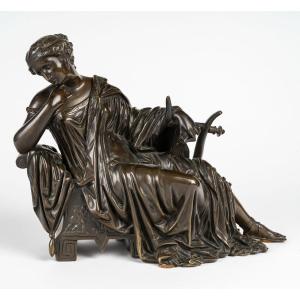With great plastic softness, this bronze statuette has as its subject one of the most famous and fascinating figures of Greek literature: Sappho, from Lesbos (7th-6th centuries BC). Sumptuously dressed in a luxuriant himation* revealing a fine embroidered chiton, lightly jeweled, her hair held in an elegant bun by a cecryphalus, the Poetess of the Island of Mytilene is represented seated, the bust approximately three-quarter view, on a couch of the Klimé type with a base decorated with motifs of Greeks, stylized palmettes and a crosspiece silhouetted with Ephebes Musicians playing the *Salpinx, the Buccin. One hand held under the chin - to signify the search for poetic inspiration -, the other clasping a scroll, the Muse of the Ancient World, her gaze dreamy, seems immersed in an elegiac reflection. At her side, opulently draped, stands the legendary Lyre fashioned by Hermes, faithful companion and major attribute of the Poetess musagète. Her attitude, both noble and languid, is highlighted by the wise inflection given to her legs, the harmonious play of her arms - one, flexibly folded towards the torso, the other, nonchalantly leaning on the Lyre -, the suppleness of her haughty head carriage, the soft sensuality of her bare shoulder. As it is represented here, this very fine effigy of Sappho evokes the personality, alternately inspired and inspiring, of the one who loved to compose intimate verses, nuptial epithalami - to which the figures of the Musicians profiled "A L'Antique" on the face of the Klimé refer). It can also symbolize, given the period of its creation, one of the iconic episodes in the life of the Poetess: the moment when, abandoning her Lyre, Sappho abandons herself to a melancholic reverie after having transcribed on vellum fiery verses composed for Phaon, the handsome and young Boatman of Mytilene disavowing the tender ardor of his love. ---------------
Not without analogy with one of the most famous works of James Pradier (1792-1852), Sappho meditating (Paris, Musée d'Orsay, Inv. RF 2990) presented at the Salon of 1852 (marble, no. 1520)**, this most refined statuette is fully inscribed by its composition combining formal elegance and grace of lines, thoughtful gestures and wise sensuality, poetry of feeling in the movement of Parisian Atticism which prevailed in the French School of sculpture of the years 1855-1860. Among the protagonists and followers of this movement - both sculptural and pictorial - also referred to as Neo-Greek, we will mention in particular Auguste Clésinger (1814-1883), Jules Cavelier (1814-1894), E.Antoine Aizelin (1821-1902) Jules Salmon (1823-1902), and P.Alexandre Schoenewerk (1820-1885) who also focused on the representation of the iconic literary muse of the Ancient World. A small "Neo-Greek Jewel", this sensitively modeled statuette of Sappho will seduce, as Georges Lafenestre stated, "All those who have a taste for beautiful forms and who are sensitive to the rhythm of harmonious lines" ("Le Salon de 1873", in: Gazette des Beaux-Arts, June 1873, p.498). It will also delight fervent followers of the Poetess of Lesbos whose magic of verse still works today.
*himation: shawl worn in Greek-Roman Antiquity over the Chiton (fine tunic); Cecryphal: strip of fabric holding back the hair, specific to the feminine hairstyle of Ancient Greece-* Klinai or Klimé: Divan with a curved back and rectangular base, the seat of which was topped with a layer covered with fabrics and pillows;-*salpinx: straight and flared trumpet; Buccin or Cornu: trumpet in the shape of a G; ;- epithalamium: Poem, song composed on the occasion of a wedding
** edited in bronze in the form of statuettes by the Parisian Maison Susse in different sizes
---------------------
Materials: Bronze with brown patina.
Dimensions: H.: 26 cm-L..: 32 cm;-Pr.: 15 cm.
French School of Sculpture from the first half of the 19th century. Circa 1850-1860.
Very Good Condition. Original patina




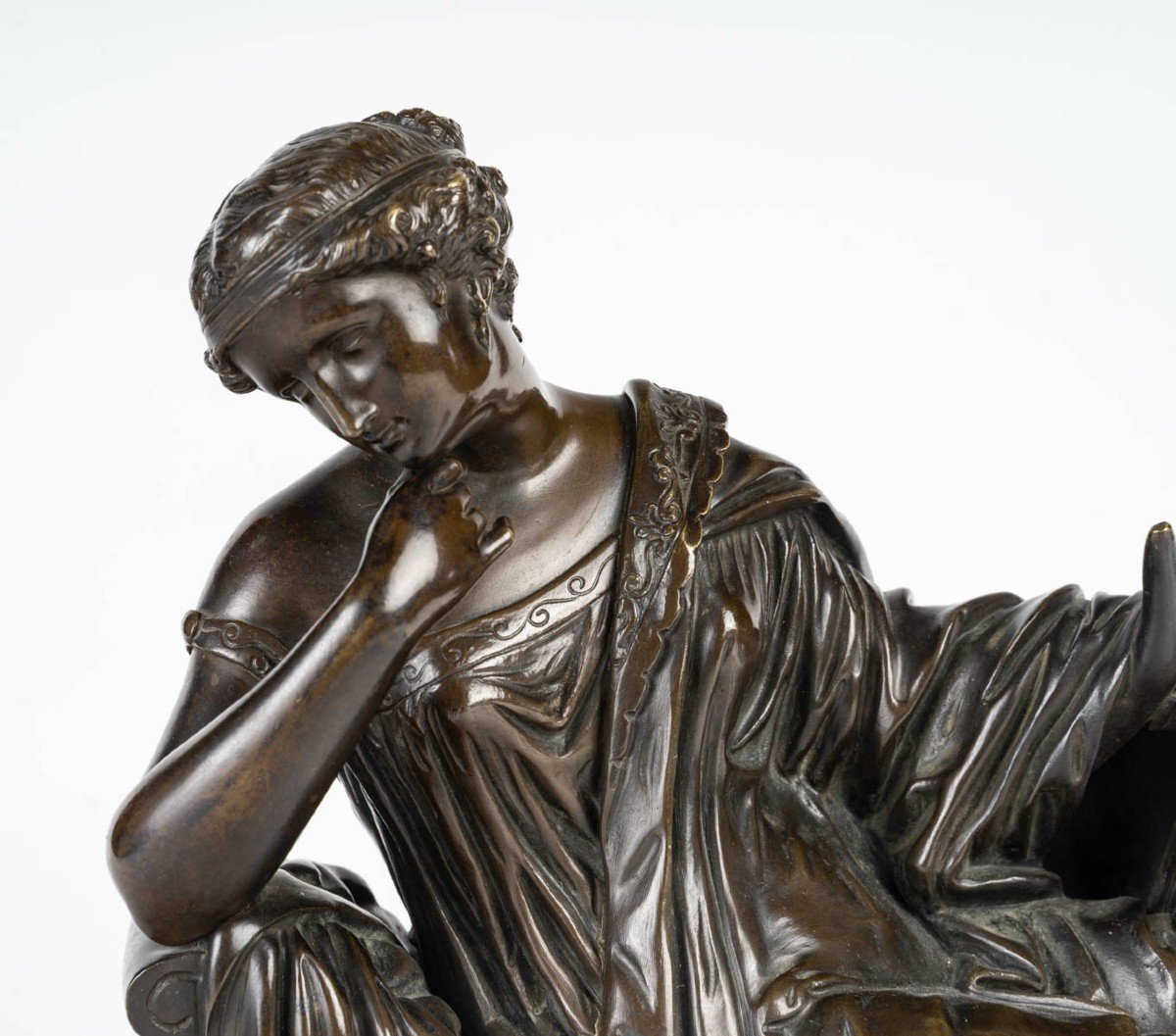

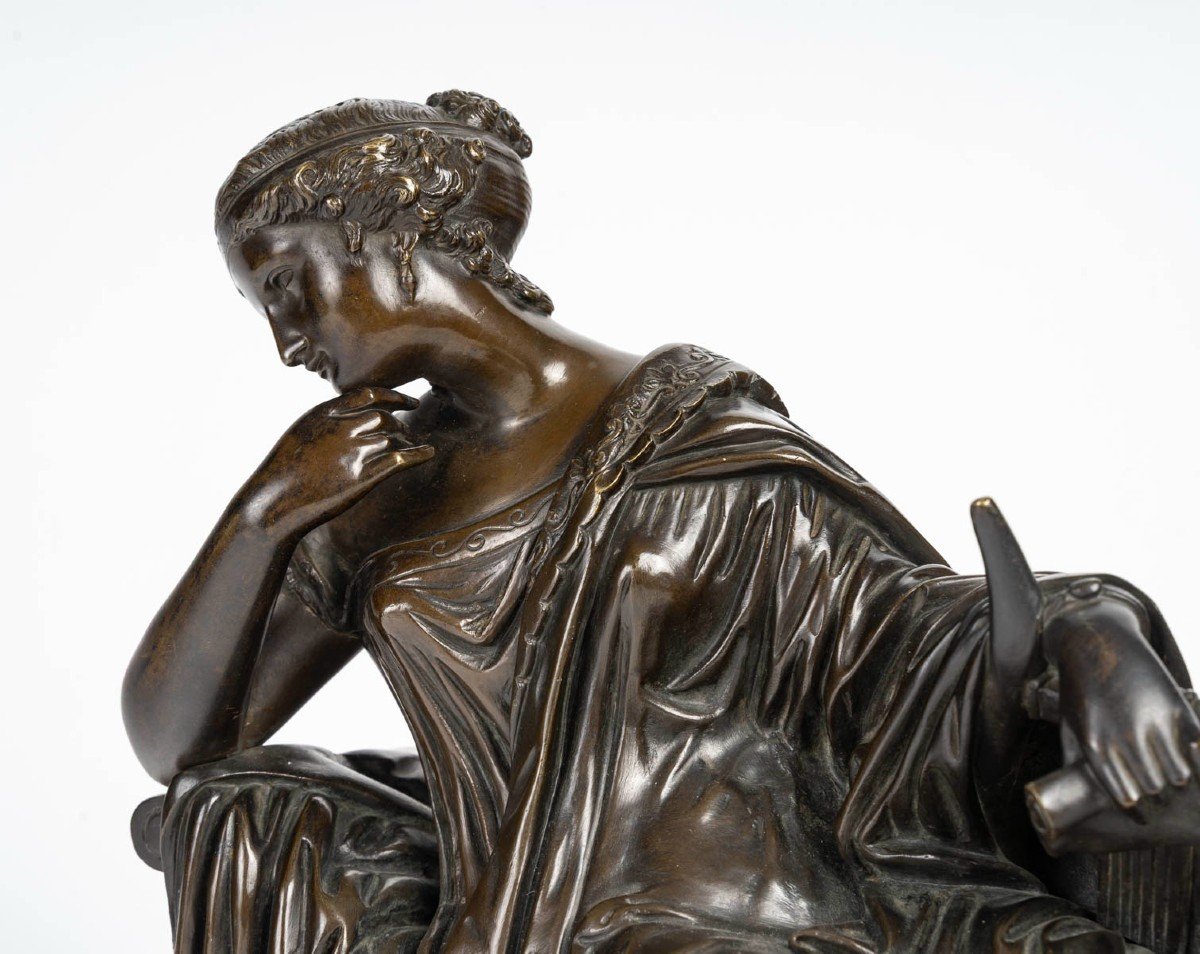
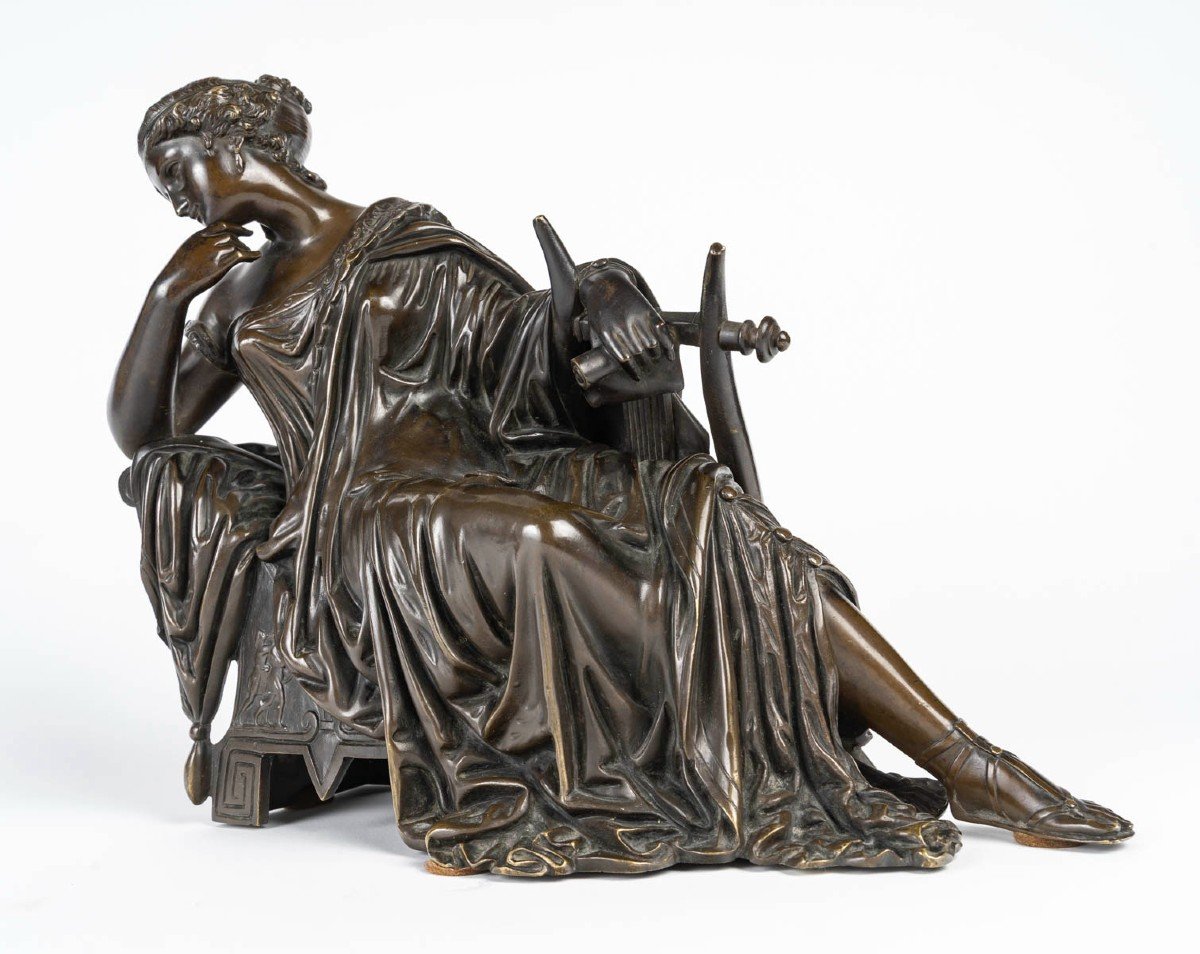

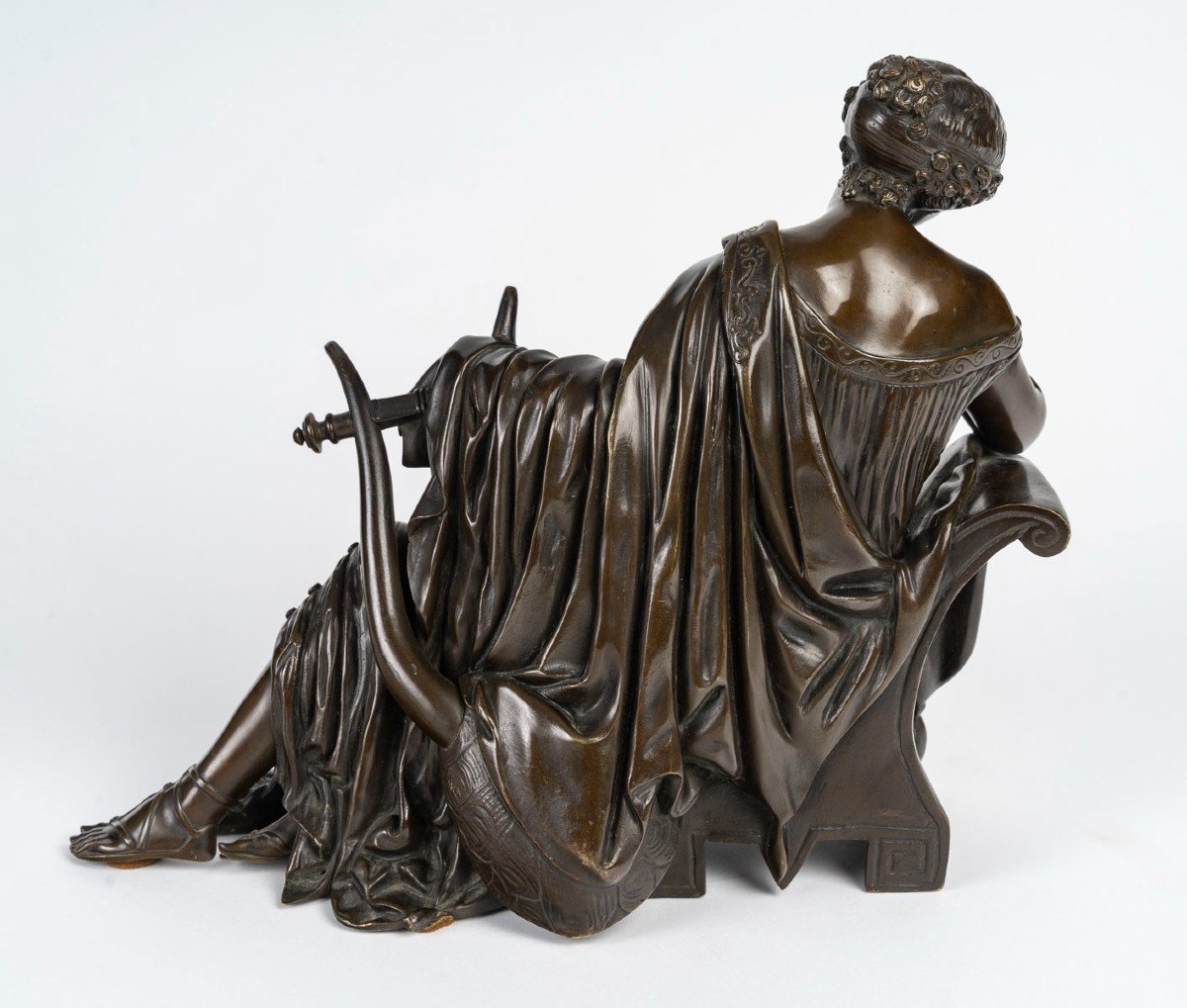



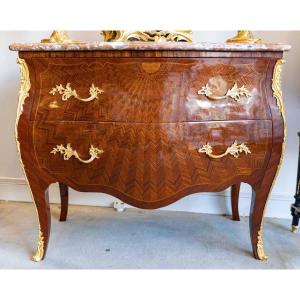

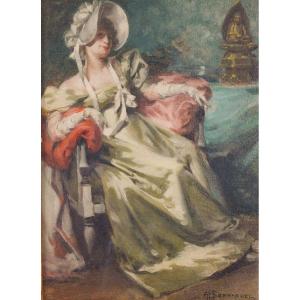



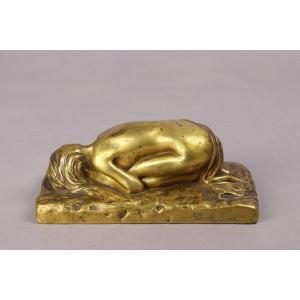






 Le Magazine de PROANTIC
Le Magazine de PROANTIC TRÉSORS Magazine
TRÉSORS Magazine Rivista Artiquariato
Rivista Artiquariato
